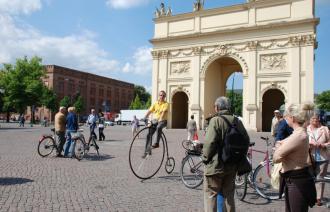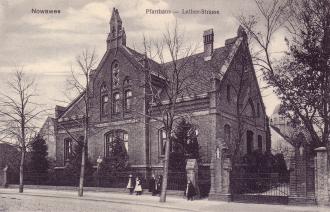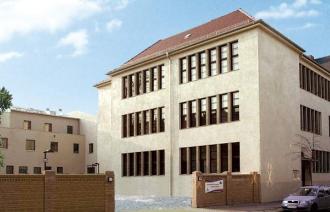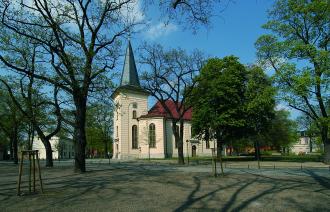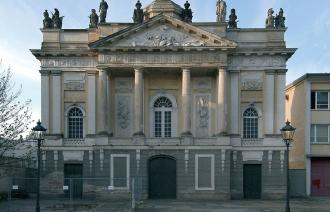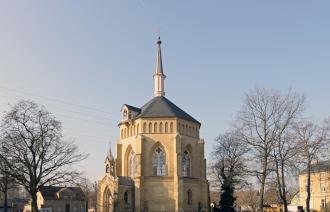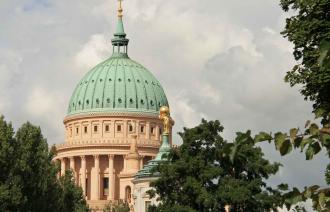Historical Trail
The Historical Trail consists of more than 40 information boards throughout the Potsdam city area. Visitors can learn about the history of Potsdam’s buildings or the lives of notable figures who lived and worked here. The trail includes landmarks such as the city gates, the obelisks at the Old Market and New Gate, and historic buildings like the Old Town Hall at the Old Market, the Ständehaus on Breite Straße, and the weavers' houses in Babelsberg. In Potsdam’s districts, signs mark locations described by Theodor Fontane in his Walks through the Mark Brandenburg.
The texts on the signs are supplemented with historical images and a QR code linking to additional information and photos online. The boards also provide details about the funding of the buildings’ restoration. The goal of the Historical Trail is to raise awareness among residents and visitors about historic sites in the city and to educate them on Potsdam’s rich history.
Any damage to signs of the Historical Trail can be reported to the Marketing Department of the City of Potsdam at marketing@rathaus.potsdam.de.

